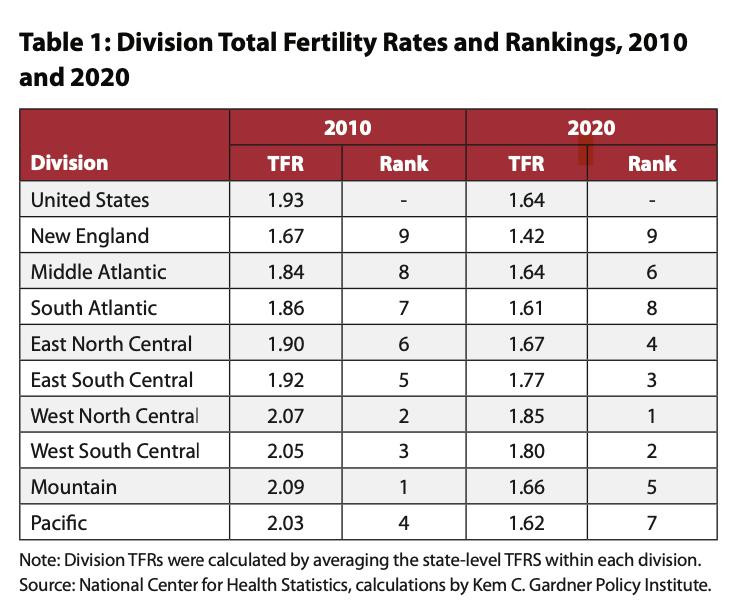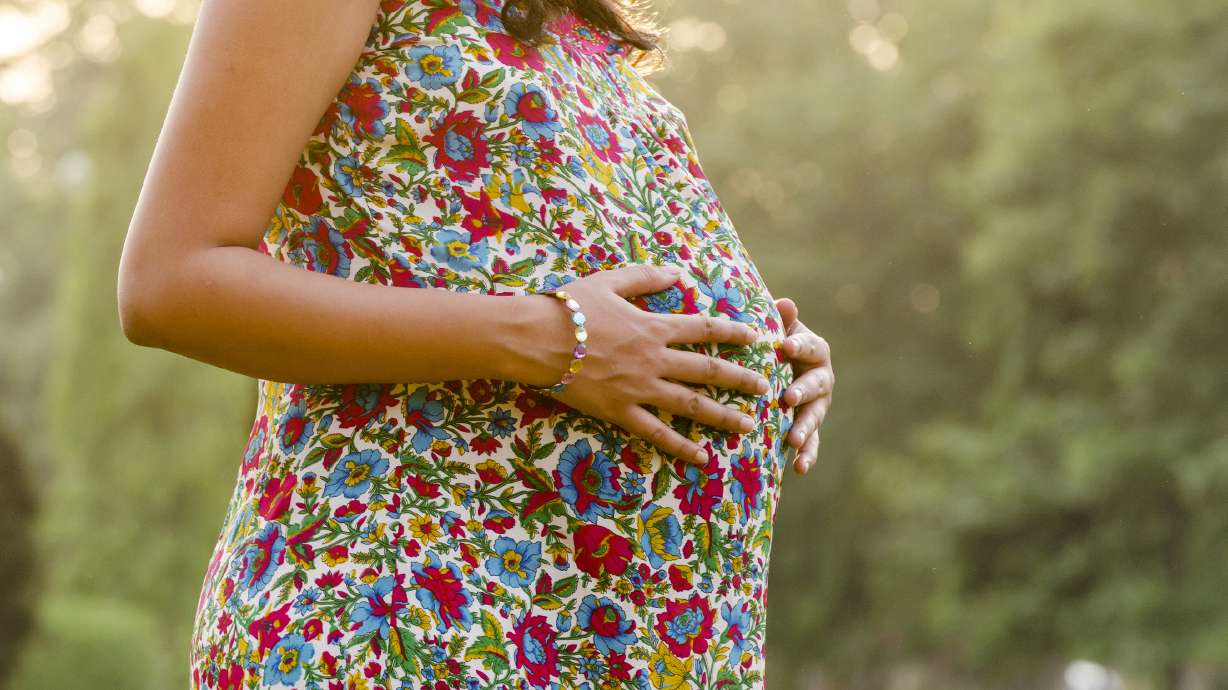Estimated read time: 3-4 minutes
This archived news story is available only for your personal, non-commercial use. Information in the story may be outdated or superseded by additional information. Reading or replaying the story in its archived form does not constitute a republication of the story.
SALT LAKE CITY — Utah's fertility rate has continued its decadelong decline, falling from the highest in the nation to fourth, a new report from the University of Utah Kem C. Gardner Policy Institute reveals.
The total fertility rate has been in decline nationally since 2007 with a slight increase in 2014. Despite the steady decline, the United States still has equal or higher rates to similar countries in Europe and North America, according to the report.
While every state and region experienced declines in fertility rates, Utah's fertility rate decline was the seventh-fastest in the nation at approximately 22%. Utah's total fertility rate of 1.92 births per woman falls behind South Dakota (1.98), Nebraska (1.94) and North Dakota (1.93).
Utah's steep decline mirrors data from the Intermountain West and Pacific regions of the U.S., which experienced the largest declines, according to the report.
The Intermountain West had the highest fertility rate of the nine divisions but saw a drop in 2010, pushing the region to fifth-highest in 2020. The Pacific region saw a similar decline, pushing it from the fourth-highest to the third-lowest.
Although Utah's rank dropped nationally, the Beehive State still has the highest fertility rate among states in the Intermountain West. Idaho's slower decline has closed some of the gap between the two states, securing the second-highest rate in the region.

Utah's total fertility rate may rank the highest among the Intermountain West but the rate doesn't apply across all age groups in the state.
Utah's age-specific rates are generally higher in ages 25 to 49, but are very low or in the middle of the rankings from ages 15 to 24.
Age-specific fertility rates saw a decline nationally in the latter group, meaning that teenage pregnancies have seen a national decline of up to 70%.
Of the eight states in the Intermountain West, Utah and New Mexico are the only two that have not experienced increased fertility in the two oldest age groups.

Concerns regarding the decline
The declining rate has drawn the focus of experts and elected officials in recent years. Concerns regarding the rate were amplified amid the COVID-19 pandemic as the U.S. continues to cope with the deaths of over 1 million Americans.
Rates have continued below "replacement level" — which means there wouldn't be enough babies born for a generation to replace itself. Declining fertility and the impact of COVID-19, there's worry regarding the shrinking population — and labor forces.
Utah Sen. Mitt Romney introduced the Family Security Act. 2.0 last week to address declining marriage rates and the baby bust. The act would "would provide a fully paid, monthly cash benefit for working families, amounting to $350 a month for each young child, and $250/month for each school-aged child."
The bill also proposes that expectant parents receive a credit mid-pregnancy to aid in expenses.
The first version of the Family Security Act was introduced by the Utah senator in 2021 and was born out of a desire to address both declining rates, he said.
"Any society, any civilization wants to maintain itself, and we're not," said Romney in a virtual discussion held by The Sutherland Institute last year.
Future outlook
Although fertility rates have been in consistent — preliminary data shows that a rebound may be possible.
"Interestingly, the preliminary national birth data for 2021 reveal the U.S. total fertility rate increased for the first time since 2014 and age-specific rates from ages 24 to 44 also increased," said Emily Harris, Senior Demographer at the Gardner Institute. "Analysts will continue monitoring fertility data to see if states also experience a rebound in the coming years."










